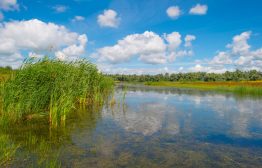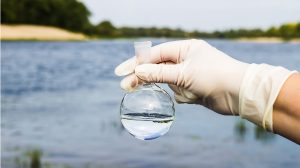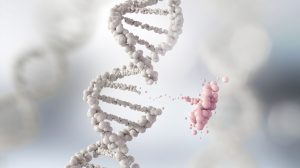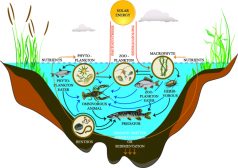Definition
noun
(phycology) A phylum comprised of chrysophytes (golden algae), xanthophytes (yellow-green algae), and diatoms
Supplement
In the old scheme of classification, i.e. the five kingdom scheme, Protista is a kingdom comprised of animal-like (protozoa), plant-like (algae), and fungus-like (slime molds and water molds) organisms.
Accordingly, Protista is divided into several phyla. The plant-like or algal species are further divided into the following phyla: Euglenophyta, Chrysophyta (diatoms), Pyrrophyta (dinoflagellates), Chlorophyta (green algae), Phaeophyta (brown algae), and Rhodophyta (red algae). Chrysophyta includes the chrysophytes or the Chrysophyceae (golden algae), xanthophytes or Xanthophyceae (yellow-green algae), and bacillariophytes or Bacillariophyceae (diatoms).1 The Chrysophyceae is a group of algae characterized mainly by their flagellar structure (although there are also species that are non-motile) and golden color due to the abundance of the pigment fucoxanthin. Ochromonas sp. snd Chrysosaccus sp. are some of the members of Chrysophyceae. Xanthophytes or the yellow-green algae are characterized by their color due to the abundance of the pigments, β-Carotene and the carotenoid diadinoxanthin. They lack fucoxanthin thereby resulting in their lighter color. Chlorarachnion sp., Tribonema sp., and Botrydium sp. are some of the xanthophytes. Diatoms are characterized by their cell walls containing pectin impregnated with silica and being made up of two halves, one overlapping the other. Most of them are unicellular whereas others can form colonies. Fragilaria sp., Tabellaria sp., and Asterionella sp. are just a few of the many diatoms.
It should be noted, however, that the taxonomic classification of organisms is bound to change as further studies of the species would lead to newer system of classification. For instance, The NCBI taxonomy database classified diatoms, golden algae, and yellow-green algae to Stramenopiles (heterokonts) of the superkingdom Eukaryota. 2
See also:
Reference(s):
1 Pascher, A. (1914). “Über Flagellaten und Algen “. Berichte der deutsche botanischen Gesellschaft 32: 136–160.
2 The NCBI taxonomy database. Retrieved from http://www.ncbi.nlm.nih.gov/taxonomy.







